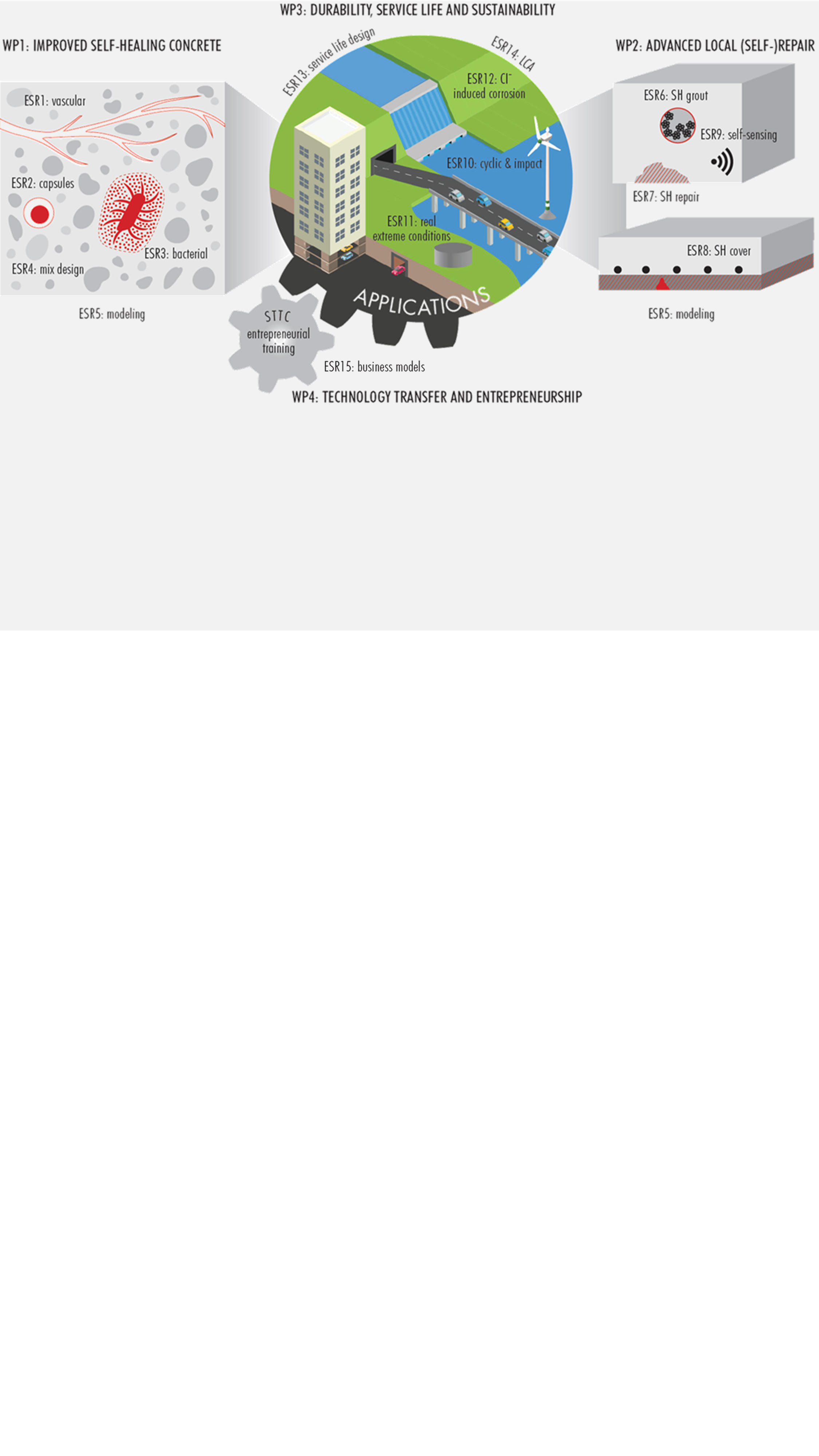Marie Skłodowska-Curie Action ITN SMARTINCS
Introduction
The Marie Skłodowska-Curie Action “Self-healing – Multifunctional – Advanced Repair Technologies in Cementitious Systems” (SMARTINCS) is an Innovative Training Network (ITN) program that will implement new life-cycle thinking and durability-based approaches to the concept and design of concrete structures, with self-healing concrete, repair mortars and grouts as key enabling technologies. SMARTINCS merges the technical know-how and complementary skills of experts in academia (11 partners), multinational companies and SMEs (8 partners), and national research agencies, certification and pre-standardization bodies (3 partners), being pioneers in the area and having successfully collaborated in the past in several European and national network and research projects. The project is coordinated by Prof. Dr. Ir. Nele De Belie (Ghent University, Belgium) and will run from December 2019 until November 2023.
Project description
SMARTINCS will train a new generation of creative and entrepreneurial early-stage researchers in prevention of deterioration of (i) new concrete infrastructure by innovative, multifunctional self-healing strategies and (ii) existing concrete infrastructure by advanced repair technologies. The project brings together the complementary expertise of research institutes pioneering in smart cementitious materials, strengthened by leading companies along the SMARTINCS value chain, as well as certification and pre-standardization agencies. They will intensively train 15 early stage researchers to respond to the clear demand to implement new life-cycle thinking and durability-based approaches to the concept and design of concrete structures, minimizing both the use of resources and production of waste in line with Europe’s Circular Economy strategy. The new generation of researchers will be immediately employable to support the introduction of the novel technologies.
Europe has the key advantage to host pioneers and specialists in self-healing disciplines who can make the ambitious goals become a reality. They teamed up in the SMARTINCS consortium and include actors in all parts of the value chain, having the capacity to create the needed break-through to introduce the novel innovative self-sensing and multifunctional self-healing strategies and advanced repair technologies into the market.
The planned activities within the ITN are represented in the work package structure. Training is given to the early stage researchers by their individual PhD projects which all fit within the scientific work packages 1-4, dealing with improved self-healing concrete (WP1), advanced local (self-)repair (WP2), durability, service life and sustainability (WP3) and technology transfer and entrepreneurship (WP4).
Objectives
These are the objectives of SMARTINCS:
- Develop and model innovative self-healing strategies for bulk and local application, including optimization of mix designs and development of multi-functional self-healing agents with attention to cost, applicability and environmental impact.
- To scientifically substantiate and model the durability of self-healed concrete and repaired systems for an accurate service life prediction and to integrate self-healing into innovative service-life based structural design approaches to foster the market penetration through an innovative life-cycle thinking.
- To quantify and prove the eco-efficiency of newly developed smart concrete / mortars by life cycle assessment modeling.
Role of Ghent University
Ghent University coordinates the project and professors of Ghent University act as promotor or co-promotor for many of the PhD students trained within the project.
Website
Contact
Prof. Dr. Ir. Nele De Belie
Department of Structural Engineering and Building Materials
Phone number: 09 264.55.22
E-mail
